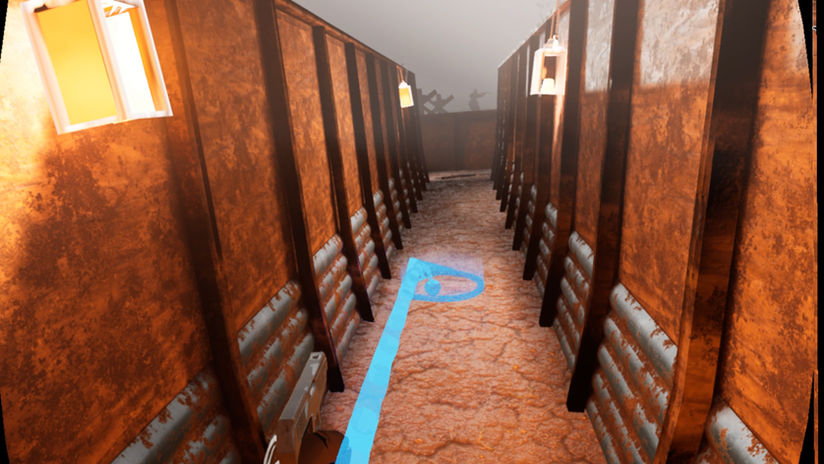
PLATFORM:
PC (Virtual Reality) - Oculus Rift, and HTC Vive
GAME ENGINE:
Unreal Engine 4
CODING LANGUAGE:
C++ - Coded in Visual Studio
Blueprints - Visual Scripting Language in Unreal Engine 4
ROLE IN GROUP:
Team Leader, Lead Programmer & Games Tester
GAME CONCEPT:
Trenchcoats is a VR Shooter set in the trenches of World War 1. The player will take control of a soldier in the trenches. The aim of the game is that the player will need to defend their trench and HQ from continuous waves of enemy soldiers until reinforcements arrive.
GAME PRODUCTION:
This game was developed over many months as part of our Game Development Group Project. The first thing we decide to do was created a Design Document, Test Plan, Business Case, UML diagrams, and Time Management Plans. We did this because it allowed us to plan out the game properly, instead of starting it straight away.
Once we were happy with the pre-production phase, we started to work on the prototype. As I was the lead programmer, I focused on creating the main mechanics for the game, which was player movement, interaction with objects in the environment, and shooting mechanics. At first, I created these in blueprints and once I was happy with the blueprint, I would rewrite in C++. The reason why I did was that designing the mechanic in blueprints is easier than coding it in C++ because it's quicker to compile and it allows me to make changes to the mechanic in a much shorter time, than if I was doing it in C++. While I was creating the mechanics, the other members of the team were working on creating the AI, menu mechanics, 3D modeling the weapons, etc.
Once we were happy with the prototype, we started to work on the final version of the game. So at this stage, I started to convert the mechanics that I design in blueprints into C++, the other programmers were doing the same as well; the lead 3D modeler started to create higher poly models of the weapons in-game, we also started to work on creating the trench level and filling it with models that we created. Throughout the creation of the final version, we played tested at least 2 times a week and we got different people to playtest it as well to see if they understood how everything worked and if it was comfortable to play.
PROBLEMS OVERCAME:
The first major problem we ran into was with the movement system. At first, we wanted the movement system to be a smooth movement system instead of a teleport movement system, as it's much more realistic and immersive. However, during play-testing, we found that the smooth movement system would cause motion sickness. To counteract the motion sickness, we tried many different solutions such as making the movement slower, making the rotation of the camera slower, etc. Sadly, none of these solutions we tried stopped the motion sickness so it the end we decided as a team to change the movement system to the teleport system instead, as this did not cause motion sickness and it was easy to implement as well.
WHAT I DID:
-
As Group Leader, I was responsible for assigning everyone their roles in the group, to make sure everyone understood what they were doing, and to help them if they got stuck or did not know what they had to do. I was also responsible for making sure that the design documents were all completed and that they were easily to understand.
-
I set up source control in the Unreal Engine, so that we could all work in one project instead of many different projects which could cause issues later down the line. Also it's easier to work within one project and as group lead, it made it easier to manage as well.
-
As Lead Programmer, I responsible for designing and coding the main mechanics of the game, which included: the movement controls, weapon mechanics, interaction with objects in the environment such as health packs. Furthermore, as lead programmer I was also responsible for assigning the other programmers, in the group their tasks and to make sure that they understood what they were doing, that their code would be compatible with the rest of the code, and to assist if they got stuck.
-
Also, like all group members I played tested this game constantly to make sure that all mechanics worked properly and that it was also comfortable to play. I also got other people who had not used VR before to playtest to make sure that the game was easy to understand for people who had not played a VR game before, and to see if they were comfortable playing it.
-
Finally, I was also responsible for making the final build of the game.



